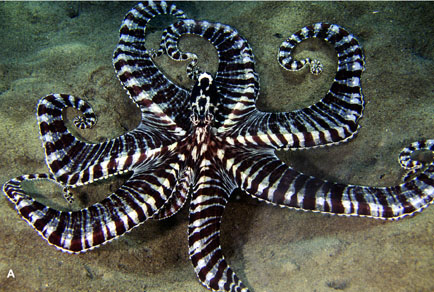Abstract
In recent years considerable media attention has been focussed on the “Mimic Octopus”, an Indo-West Pacific long-armed species which impersonates numerous poisonous or dangerous animals. This distinctive octopus is here described. A combination of unique morphological characters justify this octopus being placed in a new genus. These characters include: absence of a calamus on the copulatory organ, absence of enlarged suckers in either sex; long narrow arms capable of arm autotomy at a set level near the base; and distinctive base components of colour patterns including a white teardrop ring on the mid-dorsal mantle and a distinct white “U” patch on the posterio-dorsal mantle. Thaumoctopus mimicus n. gen. et sp. is reported primarily from the Indo-Malayan Archipelago from New Caledonia to Indonesia, Malaysia and the Philippines. Photographic records from the Red Sea extend the distribution to the western Indian Ocean. This octopus occurs in shallow waters (0.5–37 m) on soft sediment substrates where it is day-active, foraging for small fish and crustaceans. It is delineated from other long-armed genera and species complexes within the genus Octopus. Other undescribed species are flagged as potential members of the new genus Thaumoctopus. Links between habitat preference and the origins of this unique mimicry are explored.

